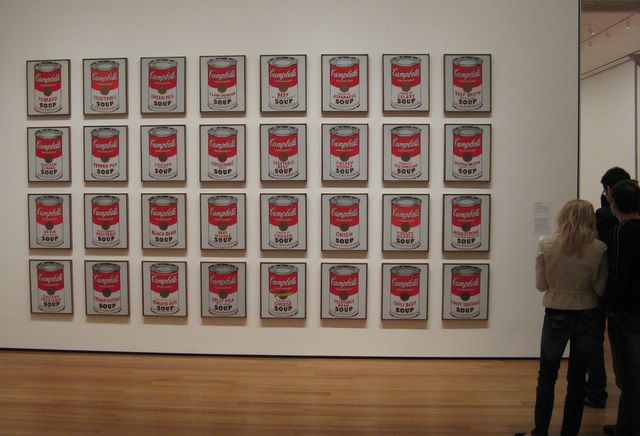

In a letter to Irving Blum regarding the hanging of these paintings, Warhol’s instructions were clear. The density of these images appears to have been important to Warhol as it even extended to the installation of these paintings when they debuted at the Ferus Gallery. From edge to edge, the canvas is filled with Elvis’s appearance, with the images-the top of Elvis’s head, the tips of his boots and the left and right leg at the extreme edges of the stretcher-all cropped in order to heighten the impact of this painting. Warhol packs this canvas with Elvis’s physical image, and by default, suggests the pervasiveness of the singer’s fame around the world. In addition to the impressive proportions of the canvas itself, the impact of this painting comes from Warhol’s’ decision to fill the entire surface of this vast canvas with this cultural icon. Warhol, POPism: The Warhol Sixties, New York, 1980, p. I always have to laugh, though, when I think of how Hollywood called Pop Art a ‘put-on!’ Hollywood? I mean, when you look back at the kind of movies they were making then-those were supposed to be real?” (A. “It was thrilling to see the Ferus Gallery with the Elvises in the front room and the Lizes in the back” Warhol said, “Very few people on the Coast knew or cared about contemporary art, and the press for my show wasn’t good. By using an image of Elvis as a cowboy, Warhol also pays homage both to an existing American icon but also acknowledges Hollywood’s propensity for appropriation-taking existing cultural references and producing new works for a new audience. Elvis was also known as The King, a product of Hollywood and the mass media designed to be adulated and adored. In Triple Elvis, the overlapping images are reminiscent of a film strip, individual frames containing a single image but when viewed together producing a sense of dynamism and movement. This use of repetition was an important strategy for Warhol.
#ANDY WARHOL MUSEUM COST SERIES#
In this painting we have three images, perfectly positioned within the canvas, with a degree of overlap but without the distortion that appears in some works from the series when the screens appear too close to each other. In most of his Elvis paintings, Warhol screens a number of images-ranging from singles to over eleven in one particular canvas-in a linear progression, some separated by a small amount of space between each screen, or others overlapping each other with varying degrees of intersection. As well as the clarity of these images, Triple Elvis is also distinguished by the arrangement of the figures within the scope of the canvas. The quality of these renditions can be seen in the remarkable details that each contains from the penetrating precision of Elvis’s eyes to the individual folds of his shirt, right down to the texture of his trousers, the exceptional detail of this particular example marks it as one of the pre-eminent examples from this important series of paintings. Using a single screen, Warhol repeats the image three times, each time producing an image of Elvis that is notable for its exceptional clarity and depth. The three figures display a confident posture, with Elvis staring directly out of the canvas with his famous “baby blue” eyes. At nearly seven feet tall, the image of Elvis Presley looms large over the viewer.
#ANDY WARHOL MUSEUM COST MOVIE#
While the others were famous movie stars, none of them achieved the immense and unprecedented star power that Elvis attracted during the crest of his early career in the mid-1950s.įor Warhol-who was fascinated by popular culture, fame and celebrity-Elvis was the ultimate subject. It was only natural that, having portrayed Marilyn Monroe, Elizabeth Taylor and Marlon Brando, he should also turn to Elvis as his subject matter. First shown at the artist’s important 1963 exhibition at Irving Blum’s Ferus Gallery in Los Angeles, Warhol’s Elvis paintings join the pantheon of the Pop master’s Hollywood superstars. Standing with his trademark proud stance, Andy Warhol’s rare triple portrait of Elvis Presley dominates this shimmering canvas just as the singer dominated the cultural landscape of the 1950s and 1960s.


 0 kommentar(er)
0 kommentar(er)
